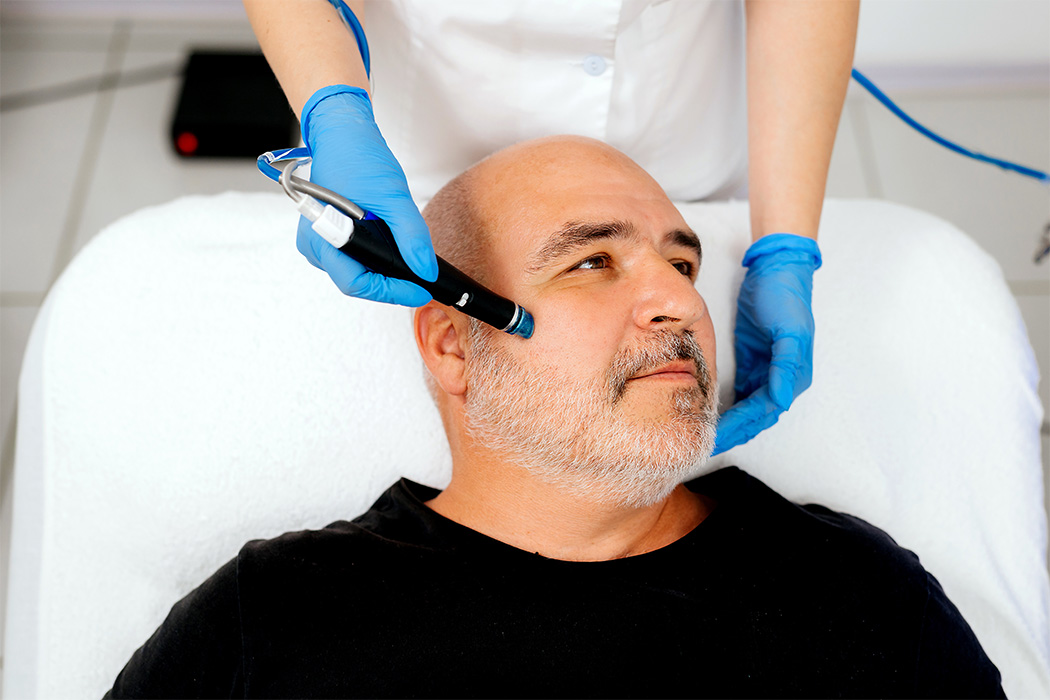Advanced Medical
hydrofacials
combines cleansing, exfoliation, extraction, hydration, and antioxidant protection
What is a Hydrofacial?
Hydrofacials are a type of facial that use water and exfoliating serums to clean, exfoliate, extract, hydrate, and protect the skin. They are non-invasive and typically take about 30 minutes to complete.
Here are some of the benefits of hydrofacials:
- They are deep cleaning. Hydrofacials use a vortex technology to deeply clean the skin and remove dirt, oil, and makeup from the pores.
- They are exfoliating. Hydrofacials use a gentle exfoliant to remove dead skin cells and reveal the fresh, new skin underneath.
- They are extractive. Hydrofacials use a suction device to extract blackheads, whiteheads, and other impurities from the pores.
- They are hydrating. Hydrofacials use a hydrating serum to infuse the skin with moisture and leave it feeling soft and supple.
- They are protective. Hydrofacials use an antioxidant serum to protect the skin from free radical damage.
Hydrofacials are safe for most skin types and can be used to treat a variety of skin conditions, including:
- Acne
- Blackheads and whiteheads
- Dry skin
- Oily skin
- Hyperpigmentation
- Fine lines and wrinkles
- Enlarged pores
- Sun damage
After each hydrofacial, remember to wear sunscreen to shield your skin from the sun’s harmful UV rays.
Finally, avoid using harsh chemicals or exfoliants on your skin for a few days following the treatment.
By following these guidelines, you can make the most of your hydrofacials and achieve your desired results.

Benefits of Hydrofacials
Hydrofacials can be a beneficial treatment for improving the appearance of your skin.
The frequency of these treatments depends on your individual skin type and needs. In general, most people find that receiving a hydrofacial every 4-6 weeks is ideal as it allows sufficient time for your skin to recover between sessions. However, if you have oily or acne-prone skin, you may want to consider more frequent hydrofacials, such as every 2-3 weeks.
On the other hand, if you have dry or sensitive skin, a hydrofacial every 6-8 weeks may be more suitable. It is important to consult with your dermatologist or skincare professional to determine the optimal treatment schedule for you, as they can assess your specific skin requirements.
In addition to regular appointments, there are a few tips to keep in mind. Ensure that you receive hydrofacials from qualified dermatologists or skincare professionals.
If you have any open sores or wounds on your skin, it is best to avoid getting a hydrofacial until they have healed.
“It is important to note that hydrofacials are non-invasive and have little to no downtime. This means that you can get a hydrofacial during your lunch break and return to work immediately afterwards.“
For most people, getting a hydrofacial once a month is ideal. This will help to keep your skin clean, hydrated, and healthy. No matter how often you choose to get a hydrofacial, you are sure to see a difference in the appearance and health of your skin.
Advanced Medical
Questions?
Discover the Power of Transformation
Locations
|
Phoenix Location 1202 East Maryland Avenue |
Glendale Location 5654 West Bell Road |